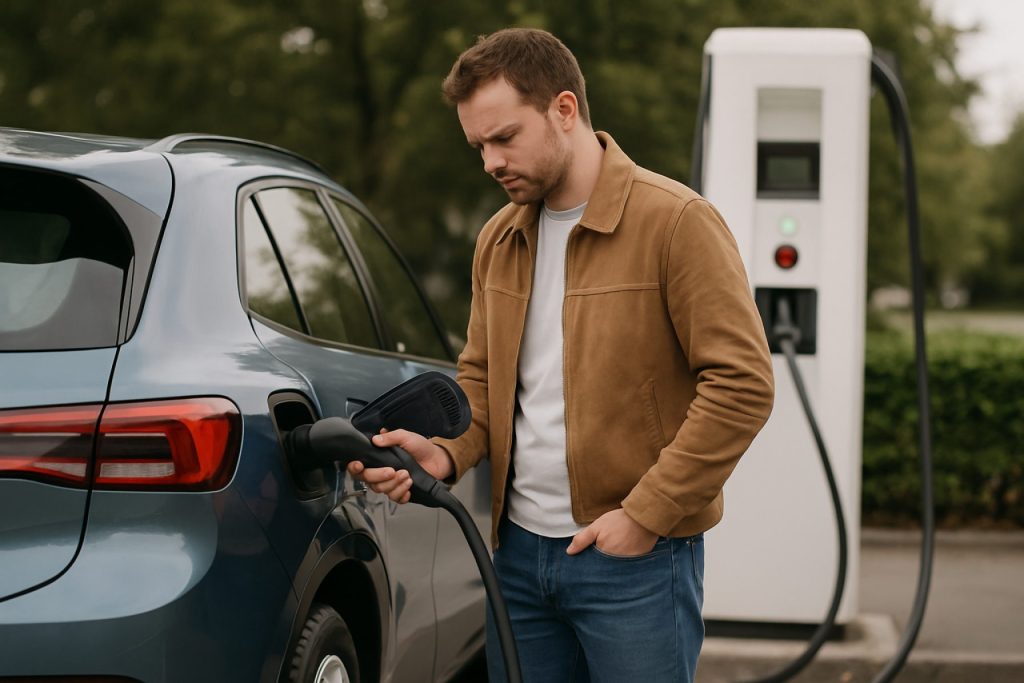
America’s Huge Electric Car Savings: How Switching to an EV in 2025 Could Put Over $15,000 Back in Your Pocket
Thinking about an electric car? Discover how much switching to an EV can save you—state-by-state, with the latest 2025 numbers.
- Average 10-year savings: $11,053 compared to gas-powered vehicles
- Top potential savings: $15,276 (varies by state)
- Lowest 10-year charging cost found: $4,254
Thinking of joining the electric revolution? In 2025, making the switch to an electric vehicle (EV) could save you thousands—and for some Americans, over $15,000—compared to sticking with a gas-powered car. The gap between fueling with gasoline and charging at home keeps growing, especially as gas prices rise and more households invest in at-home charging solutions.
Recent data from Payless Power reveals that, on average, driving a gas car costs $11,053 more over 10 years than driving an EV you charge at home. The savings jump even higher depending on where you live due to fluctuating gas and electricity prices. So, where can you benefit most? Let’s break it down.
Q: What’s Driving the Huge Cost Differences Between Gas & Electric Cars?
The main driver? Sky-high and unpredictable gas prices—something that Wall Street Journal reports are expected to linger throughout 2025. In contrast, home electricity rates are more stable, creating massive long-term savings for EV owners.
Charging at home can cost as little as $4,254 (over 10 years!) in some states. Compare that to gas, which can top $25,000 in the priciest regions.
How Much Do You Really Save by Owning an EV? State-by-State Numbers
Here are some real-world scenarios:
- Best-case scenario: Save $15,276 over 10 years by charging at home vs. buying gas.
- Typical savings: Most U.S. drivers will pocket between $6,000 and $13,000 over a decade with an EV.
- Even states with pricier electricity still save: For example, $6,331 in average 10-year savings.
- Outliers: Rarely, states with high public charging or utility rates reduce the savings, but almost nowhere does gas stay cheaper.
Q: How Can I Calculate My Exact EV Savings?
Simply tally your state’s average gas prices, your vehicle’s fuel efficiency, your annual miles, and compare to local residential electricity rates. Sites like Energy.gov and the AAA Fuel Cost Calculator can help you estimate.
How to Maximize Your EV Savings in 2025
- Charge at Home Whenever Possible: Home rates are substantially lower than public fast chargers.
- Install Smart Chargers: New technology lets you automatically charge during off-peak, low-cost hours.
- Look for Incentives: 2025 tax credits and rebates make upfront EV costs more affordable. Check IRS.gov for updates.
- Pile on the Miles: The more you drive, the more you save versus buying gas.
Q: Are There Other Ways EVs Save Money?
Absolutely. EVs typically cost less to maintain (no oil changes, fewer moving parts), and several states offer perks like HOV lane access, emissions test exemptions, or reduced registration fees.
Should You Switch Now or Wait? 2025 Trends to Watch
EV prices are dropping, battery ranges are improving, and new models are coming fast. The savings grow as home charger installations and renewable energy expand. Experts at Tesla and Ford agree that 2025 may be a “sweet spot” for value hunters.
Make the Smart Move: Calculate Your Potential EV Savings Today!
- Compare average gas vs. electricity costs in your state
- Use official calculators to estimate your 10-year total
- Find out if you qualify for federal or state EV incentives
- Charge at home for the biggest long-term payoff
- Keep tabs on Energy.gov and Consumer Reports for breaking EV updates



